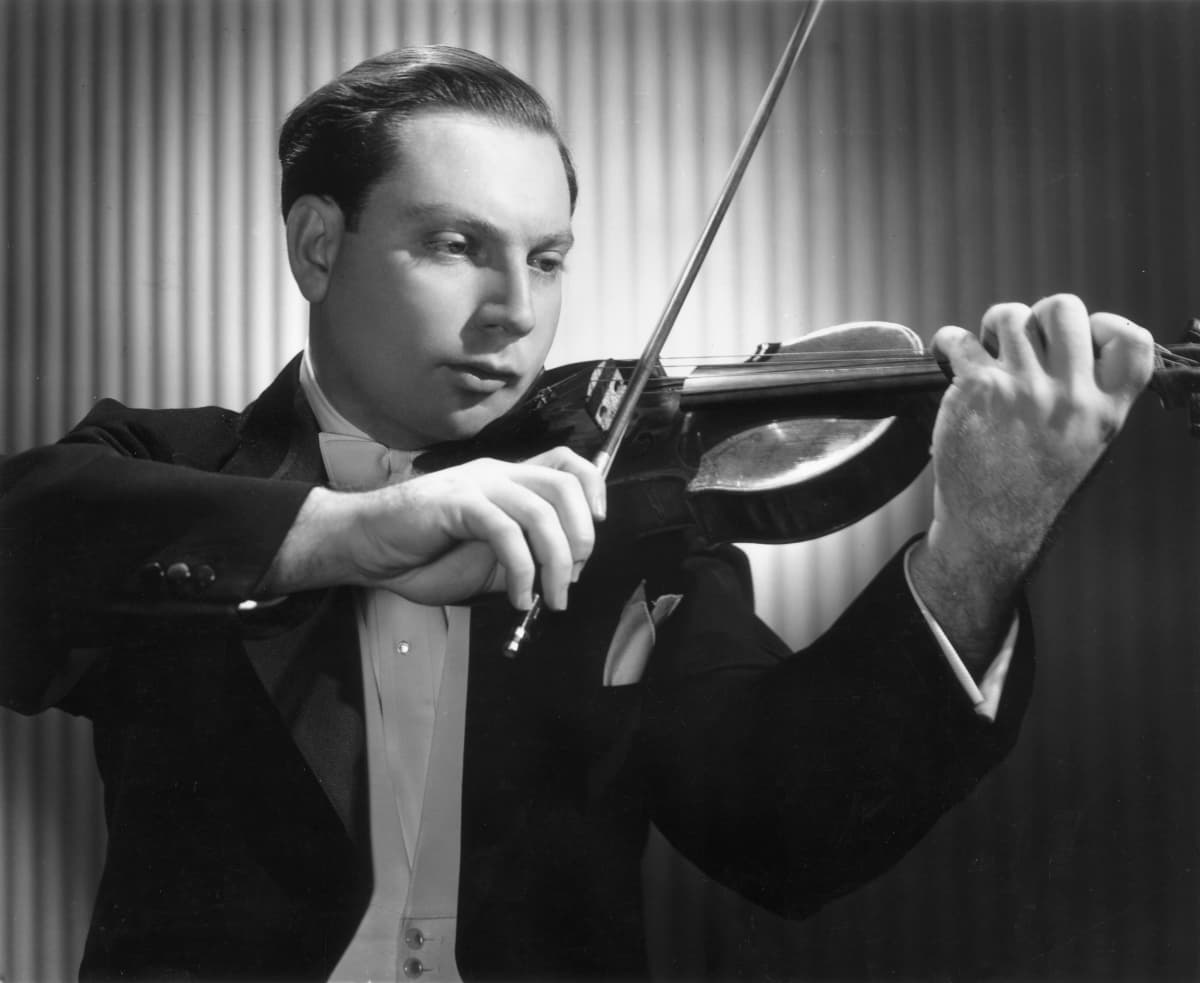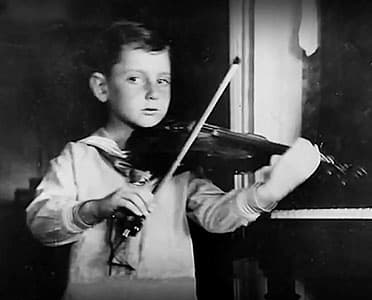Isaac Stern’s tombstone simply reads, “Isaac Stern, Fiddler.” However, the violinist was much, much more than that. He was an educator who mentored generations of musicians, including Yo-Yo Ma and Itzhak Perlman, and his activism on behalf of classical music famously brought him to post-Cultural Revolution China.

Isaac Stern in 1945
Embracing the works of contemporary composers, Stern started recording in 1944 and continued until the last year of his life. A commentator wrote, “As someone who started with nothing and devoted his life to giving back to the country he called home, Isaac Stern said he never stopped learning. “In eight decades, I feel that I am still a student. And that’s what’s wonderful. The wonderful thing is to search and sometimes find.”
Isaac Stern Performs Mendelssohn’s Violin Concerto, Op. 64
Isaac Stern was born on 21 July 1920 in the town of Kremenets, on the shifting border between Poland and Ukraine. Stern remembers, that his father “Solomon was a dour man born in Kiev. There are pictures of him as a dashing young man with a goatee, wearing high boots and an open silk shirt and holding an easel and a paintbrush. He came from the upper-middle class, as did my mother, Clara, who was seven years younger than he.”

Isaac Stern’s tombstone
During the week of his birth, his mother received a scholarship to study singing at the Conservatory in St. Petersburg. However, the Russian Civil War interfered, and shortly after the failed Bolshevik invasion of Poland, his father obtained a Polish passport and a visa to the United States. As Stern writes, “after months of travel through Siberia and across the Pacific, we arrived in San Francisco, where my mother’s older brother had settled some years before. I was ten months old.”
George Enescu: Violin Sonata No. 3 in A Minor, Op. 25, “Dans le caractère populaire roumain” (Isaac Stern, violin; Alexander Zakin, piano)
Solomon Stern was an artist of sorts, “he knew a little bit about paints, so he became a house painter and was quite ill in later life with lead poisoning.” His parents were not religious, and “the traditional Jewish home did not exist for us.” They were well-educated, loved music, and naturally liberal, and had long discussions about politics.

The young Isaac Stern playing the violin
Young Isaac remembers that his mother “sometimes sang and my father played the piano.” He started piano lessons at the age of six, and various anecdotes elucidate the origins of his musical genius. However, as Stern clarified later, “I did not return home from a concert one day and plead for a violin. Nor did I begin, at the age of five or six, to pick out melodies on the piano. None of that; nothing so mysterious, so romantic.” As it turns out, the Stern family lived across the street from the Koblick family, and “my friend Nathan Koblick was playing the violin; therefore I wanted to play the violin also.”
Camille Saint-Saëns: Violin Concerto No. 3 in B minor, Op. 61 (Isaac Stern, violin; Orchestre de Paris; Daniel Barenboim, cond.)
Stern can’t remember how he got his first violin, but he recalls that he had one teacher after another. As he writes, “Those teachers, none of them particularly effective, found that I was progressing beyond their capacity to teach me, at a faster pace than they could handle. I insisted on continuing with the violin, not because I thought I was musical but because Nathan Koblick was still playing.”

Isaac Stern and Yo-Yo Ma in 1986
With financial support from a benefactor, Stern entered the San Francisco Conservatory and he considers Robert Pollak his “first decent music teacher.” Stern quickly rose to the position of concertmaster of the conservatory orchestra, and he remembers playing with Ernest Bloch. “One of the pieces he conducted, with me as concertmaster, was his Concerto Grosso. I wore short pants and when I sat, my feet didn’t reach the floor.” When he was ten, Stern discovered that he was able to do things on the violin, things that no one had taught him. “I moved the bow in certain new ways; feel my fingers on the strings; bring forth shades of sound.” Just a couple of months later, Stern gave his first violin recital with Dora Blaney at the piano on 28 April 1931. A critic wrote the next day about “a boy violinist of exceptional talent and excellent technical control of the instrument.”
For more of the best in classical music, sign up for our E-Newsletter

Wonderfully written piece about an amazingly honorable man as well as a fabulous musician.